When you adopt a kitten, you're bound to ask yourself what’s the best food to give them. Kittens need quality food to develop properly and maintain good health. Let’s share a few insights.
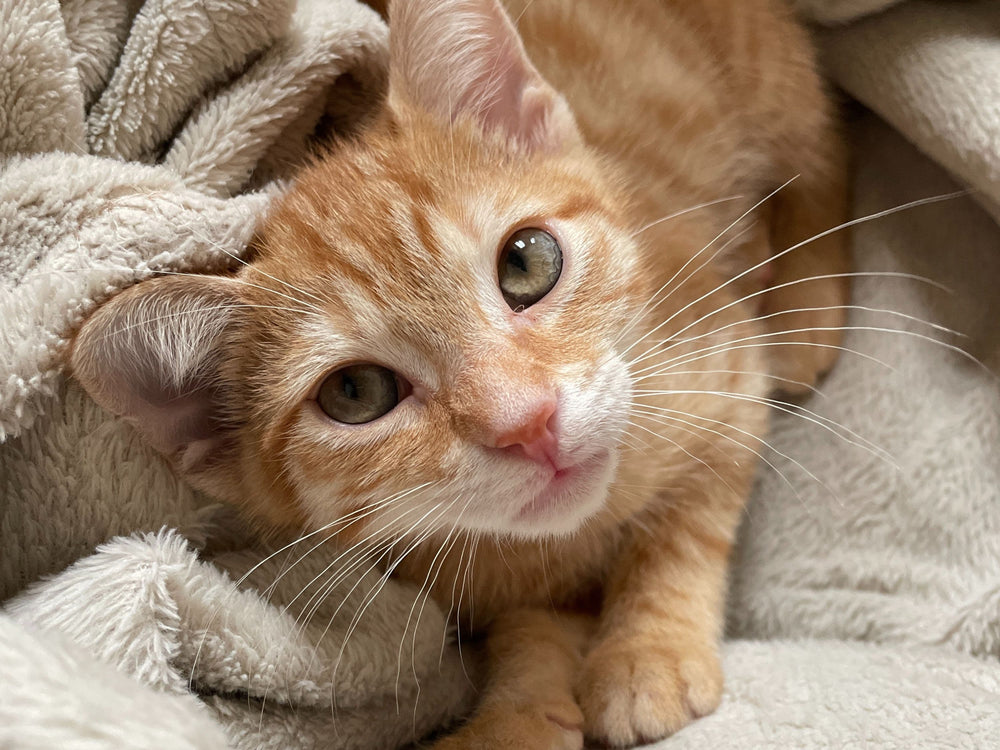
What diet should I provide my kitten?
Establishing dietary preferences
Even before a kitten is born, his food preferences are already taking shape as they are determined by what the mother eats during gestation and lactation. He’ll instinctively be drawn towards the same food when weaning. Kittens learn by imitation and most of their eating habits develop in the first 2 months of their life. They'll reject harmful or unpleasant foods and seek out foods that interest them from a nutritional or sensory point of view.
You'll be pleased to know that despite the "food imprint" kittens inherit from their mother, their preferences are not set in stone. Of course, with age, these food preferences will become more entrenched, and they may gradually start rejecting new things. This can set in earlier if a kitten is only exposed to one type of food.
However, even if a cat has never been exposed to variety, it's entirely possible to gradually change his habits with a dietary transition. When adopting your kitten, you can change his diet by slowly introducing new food alongside what he's accustomed to.
The nutritional needs of kittens
Kittens require food that meets their nutritional needs.
Like adult cats, they need essential amino acids (taurine, arginine, leucine, lysine, etc.) which come from proteins. They also need lipids (essential fatty acids), minerals, vitamins, and fibre from their food to develop a healthy digestion.
However, unlike adult cats, kittens are still developing! Their bodies are gradually maturing, synthesizing new tissues, etc. Their nutritional needs are somewhat higher. Compared to adult cats, kittens require food that's richer in proteins, amino acids, fats, essential fatty acids, vitamins, minerals, and trace elements.
They need a diet tailored to their age. Giving your kitten adult cat food can be harmful. Without a specialized diet, your kitten could suffer from deficiencies, experience slow development, and have serious health problems (poor immune response in case of illness, neurological disorders, etc.).
Contrary to some beliefs, cow's milk isn’t suitable for kittens.
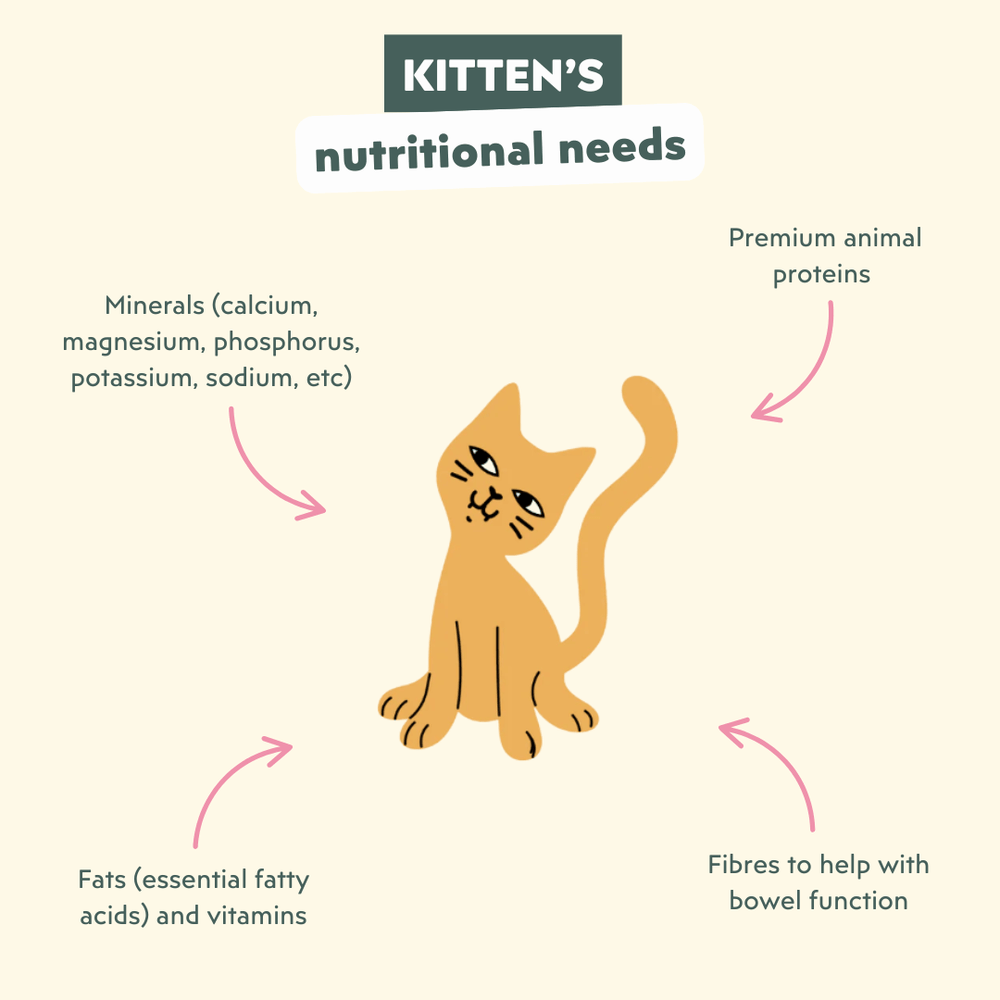
What is the best diet for my kitten?
As stated above, your kitten needs a diet suited to his age.
There are two commercially available foods to provide to your kitten: dry food and wet food which comes in various forms (terrines, mousses, chunks...). Textures can vary from one brand to another.
But be careful, not all commercially available foods for kittens are created equal. Many kitten products contain low-quality proteins from carcass scraps and bone residues. Sources that have no nutritional value for your kitten.
Others contain a lot of carbs, which your kitten does not need. His body's not equipped to digest, absorb, and metabolize large amounts of carbs which can lead to digestive problems and increase the risk of diabetes.
To help find the right food, take a look at our article on how to choose the best dry food for your kitten.
Healthy wet food and dry food for your kitten
At Ziggy, we take care of your kitten like our own.
Developed by feline nutrition expert, veterinary Géraldine Blanchard, our dry food for kittens and wet food for kittens are rich in premium proteins (muscle meat and premium organ meats of high nutritional value), rich in fats, low in carbs, and balanced in calcium and phosphorus so that your kitten can develop properly and be healthy.
Should it be dry food or wet food for my kitten?
It all depends on their age.
If your kitten is under two months, we recommend giving him wet food in addition to his mother’s milk.
As explained in our article "dry food or wet food: what to feed your kitten?", around the time of weaning (between the 6th and 10th week for a weaning age of 7 to 8 weeks), and based on a wet diet or homemade portion, your kitten will benefit from getting some dry food for kittens each day so he can get used to the texture.
You can increase his portion size after weaning. If your kitten's not neutered, treat him to all the food he wants until he's 6 months, split up into many small meals throughout the day that he can dip into whenever he's a bit hungry.
At Ziggy, we recommend having a bigger share of wet food because a kitten's digestive system is not yet efficient enough to digest large amounts of starch, a carb that’s necessary to make dry food. This allows dry food to hold together and have an airy and crunchy texture.
The wet food has many benefits for your little fluffy friend:
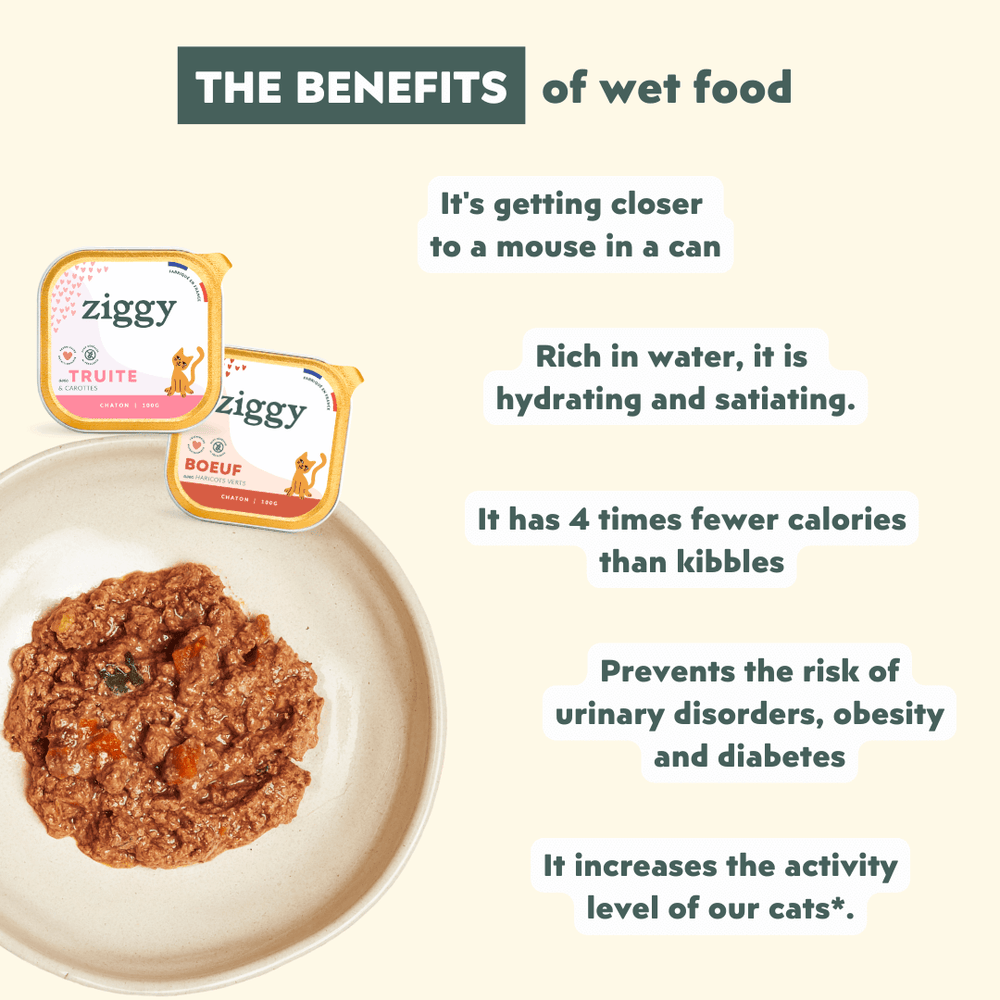
* It's unclear whether this is due to hydration or urination, but several studies suggest that felines who eat wet food are more physically active than those who eat dry food.
How much food should I give my kitten each day?
Whether dry, wet or mixed, favour a high-quality, protein-rich food specially adapted for kittens. The size of a kitten's daily portion depends on his weight and age.
Here’s our chart to help calculate the best daily portion size for your kitten:
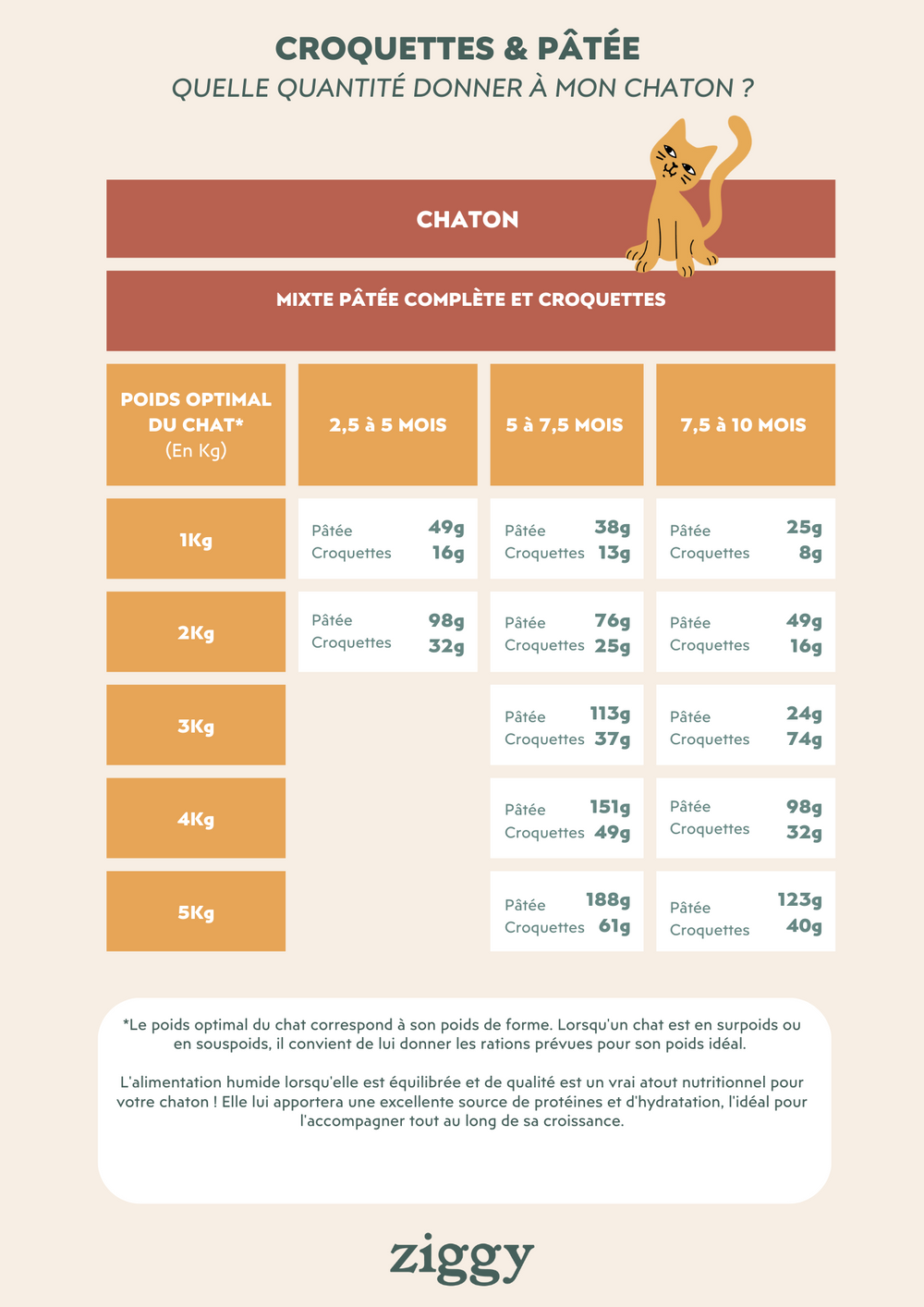
Here's our portion calculator to easily and accurately determine the daily amount of food to give your kitten. You'll find the exact amount to give your baby cat depending on his diet. Whether you're feeding him a mix of wet and dry food, or only wet food or dry food.
You should be aware that having your cat neutered doesn't automatically mark the start of their adult life.
Until he’s 12 months old, your kitten will need a diet specifically designed for kittens regardless of whether they've been neutered or not. You'll simply need to correctly ration their daily food portion to match their nutritional needs to avoid them becoming overweight and obese. Find out more in our article on how to feed a neutered kitten.😺
Long live diversity!
Kittens are curious animals. During their first months, you can cut small pieces (approximately a teaspoon’s worth) of various types of food into your kitten's meal. For example, a bit of meat, fish, boiled courgette, yoghurt... This will allow your kitten to get used to different tastes and textures and increase the chances that he'll accept dietary changes in the future.
The guide to caring for your kitten
Nutrition, care, behavior, well-being… Find all our advice on how to take care of your kitten in our guide. And also a few name ideas if you haven't settled on one for your little one yet. 😺 (translated in French only)



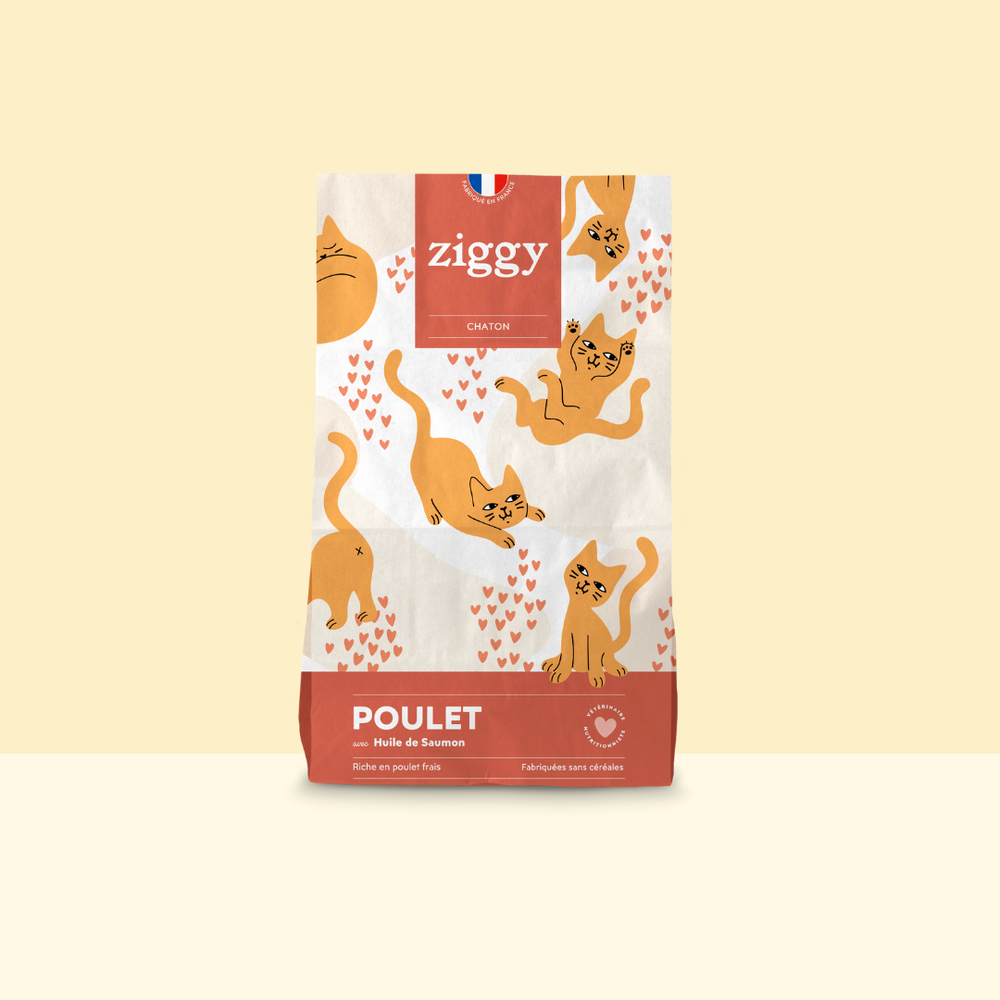
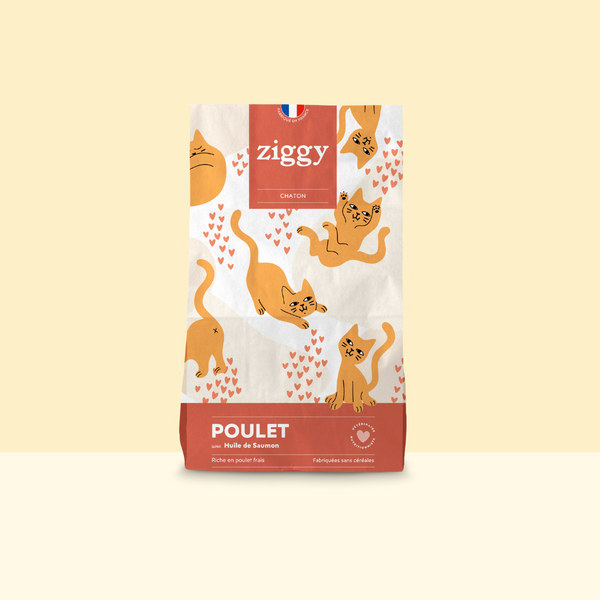







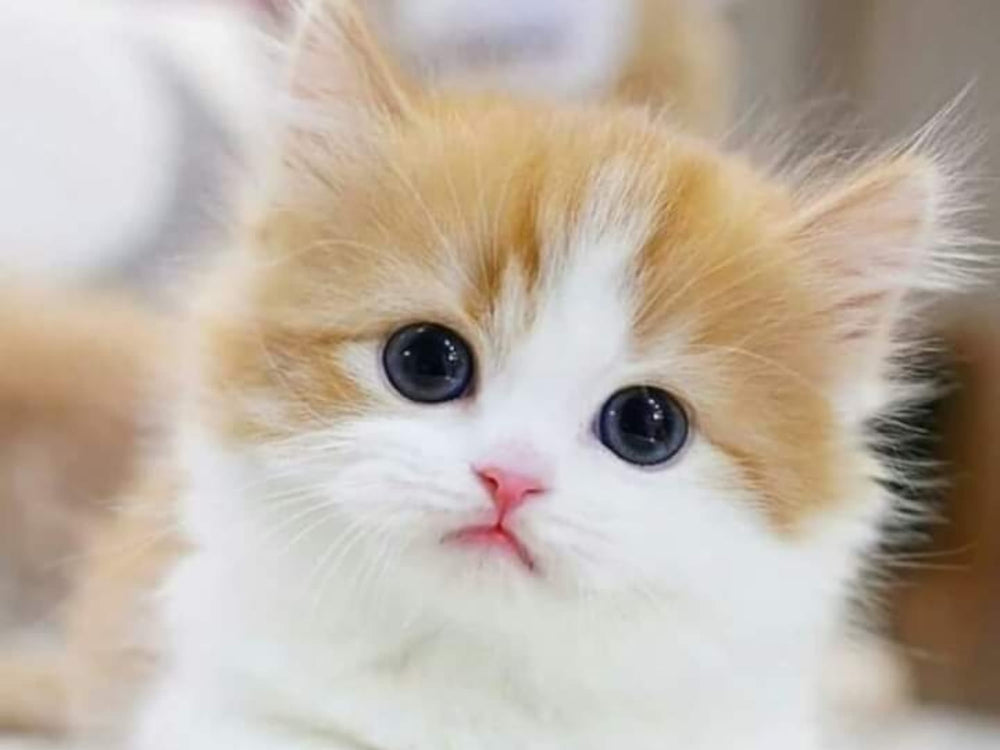
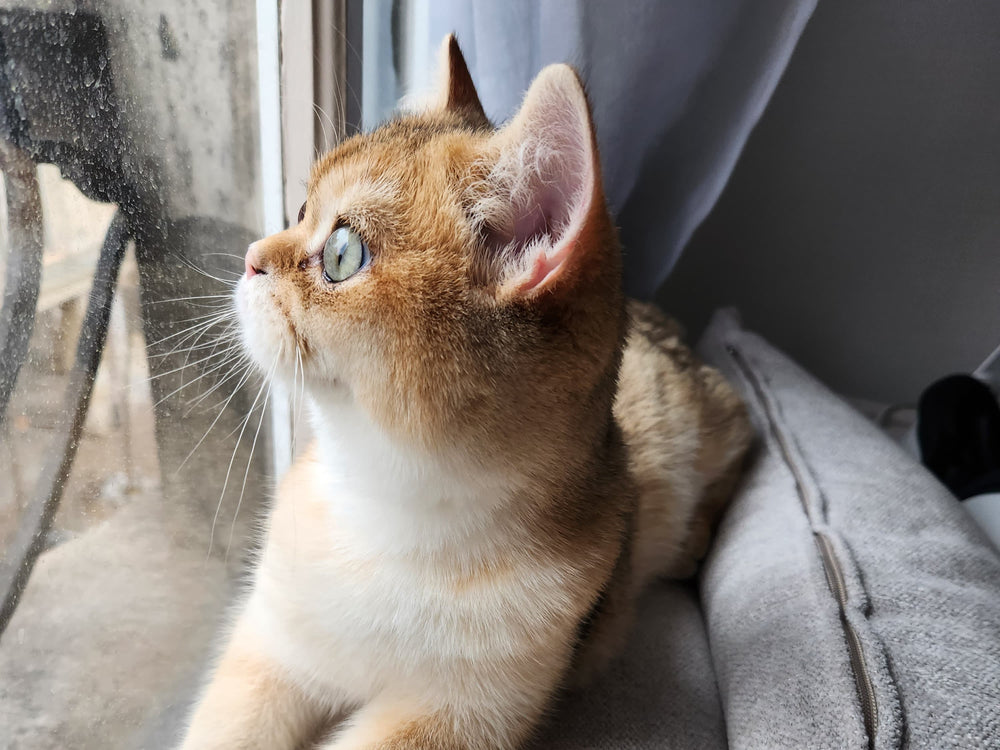
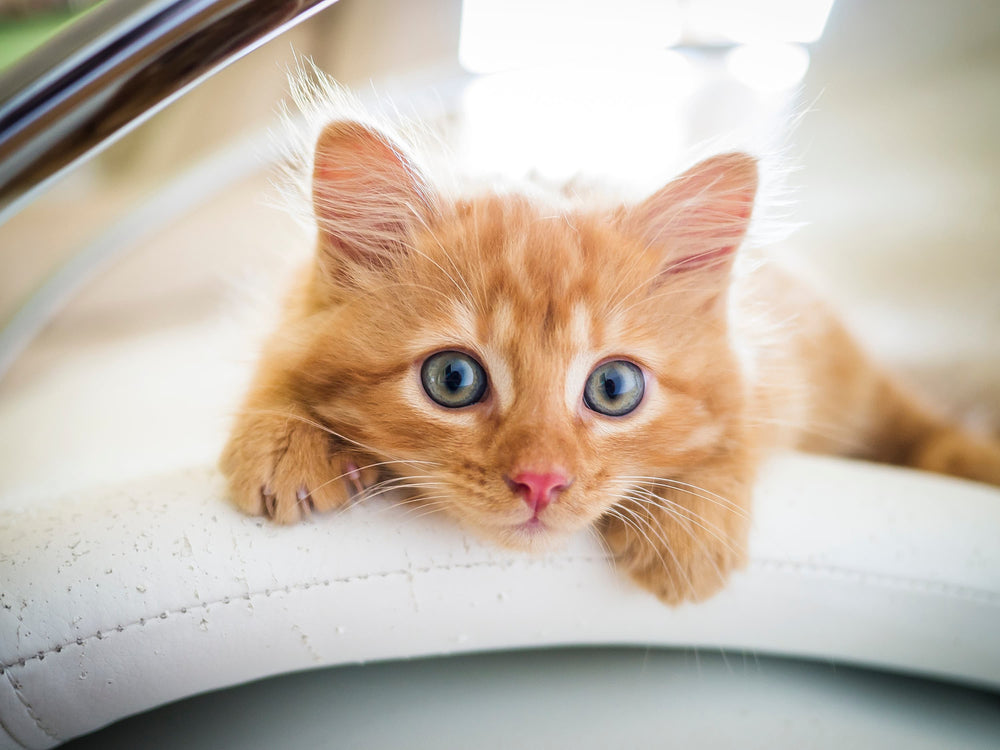
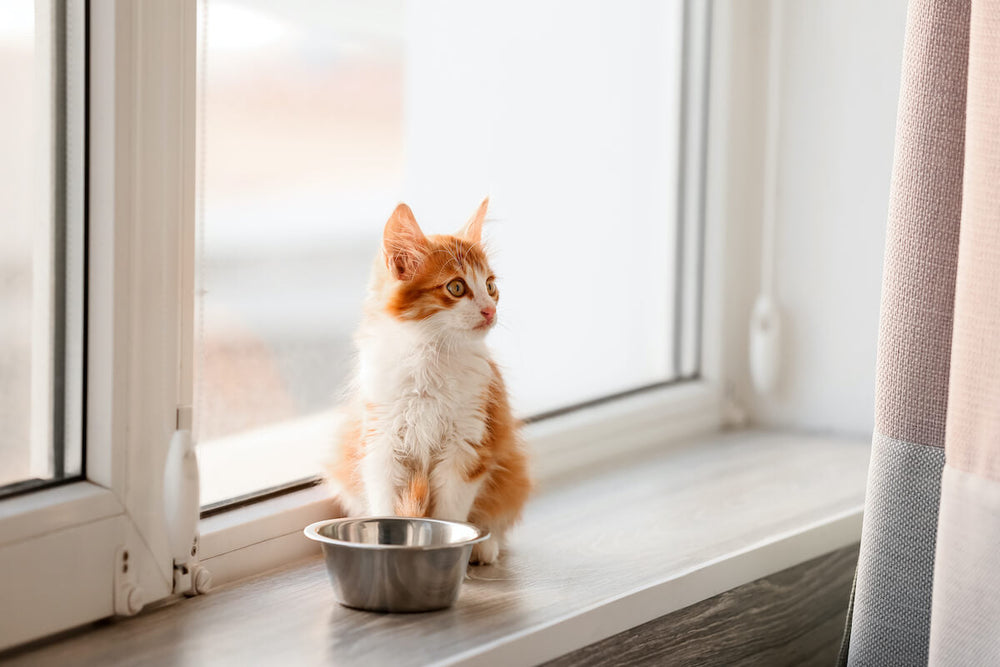
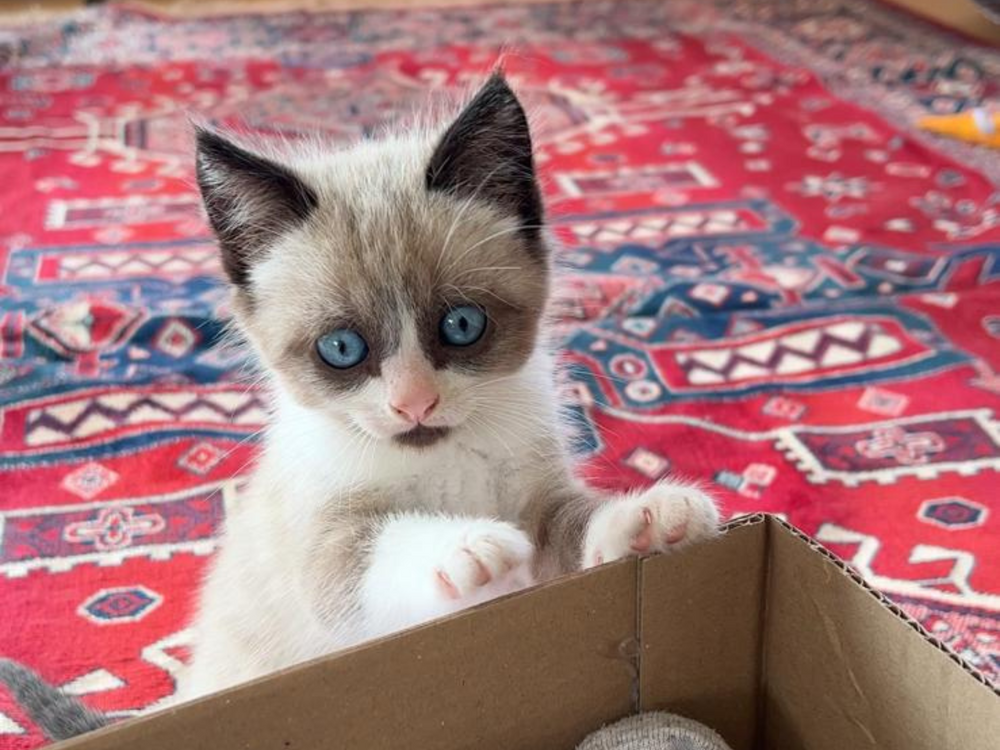
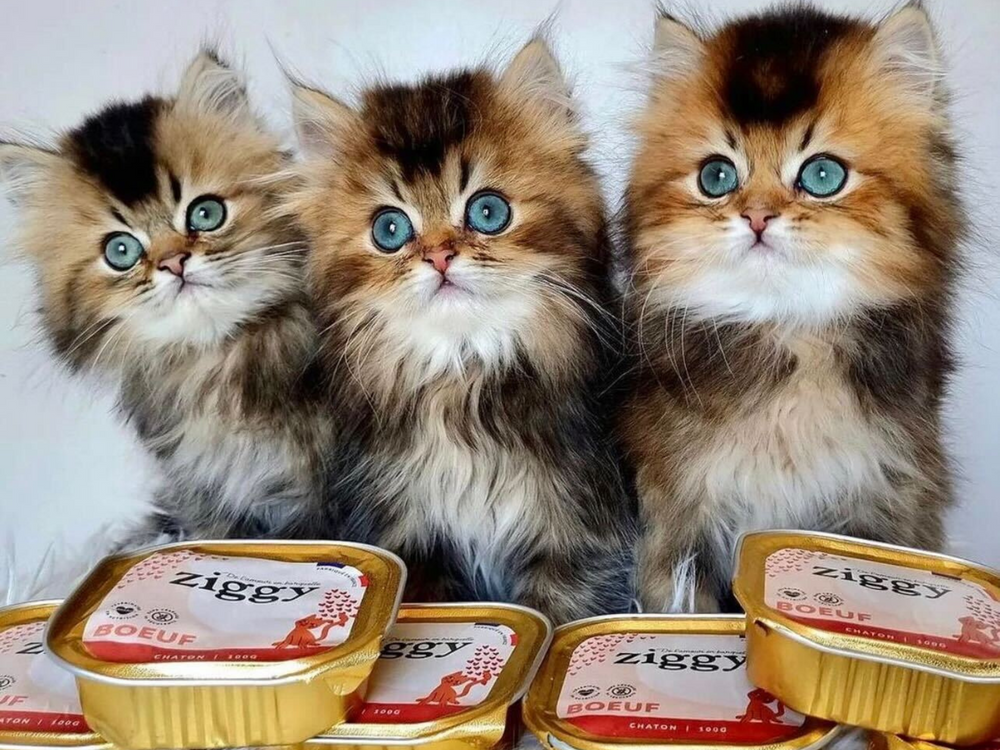
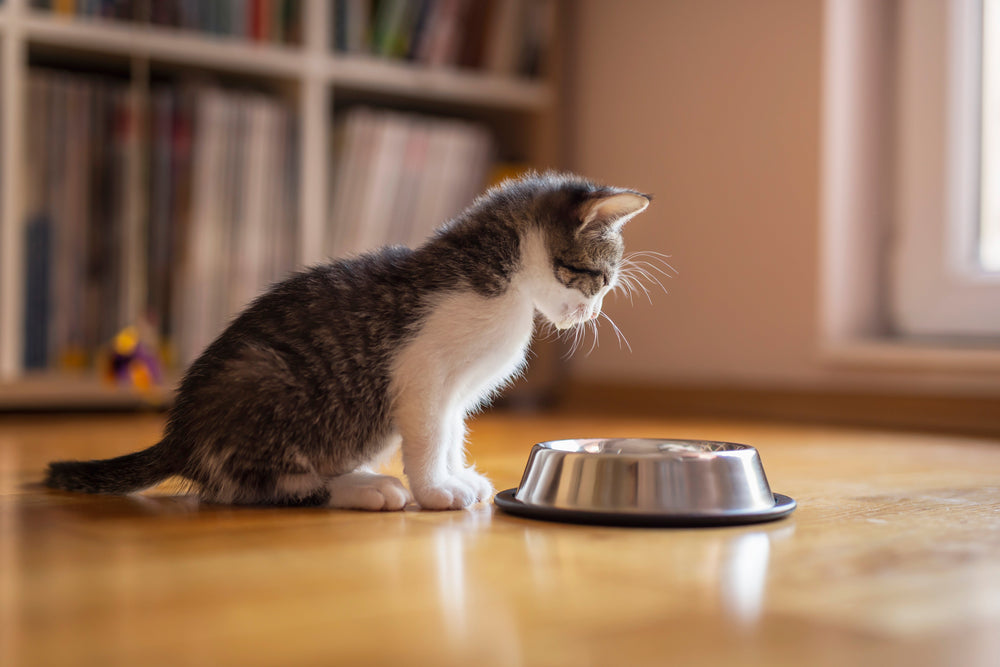
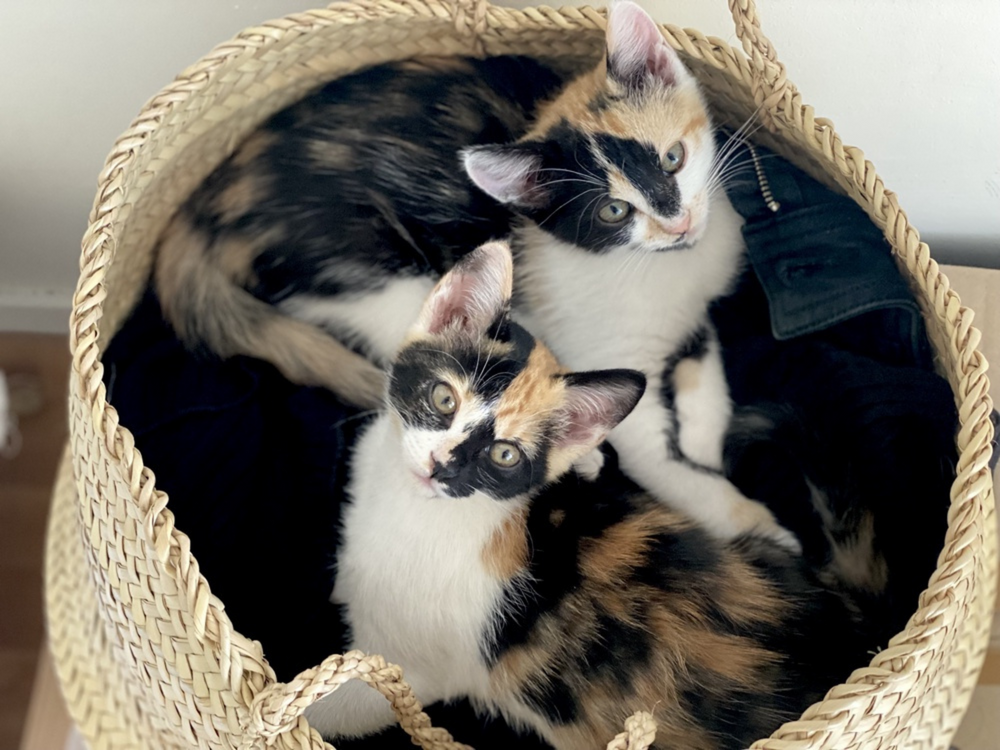
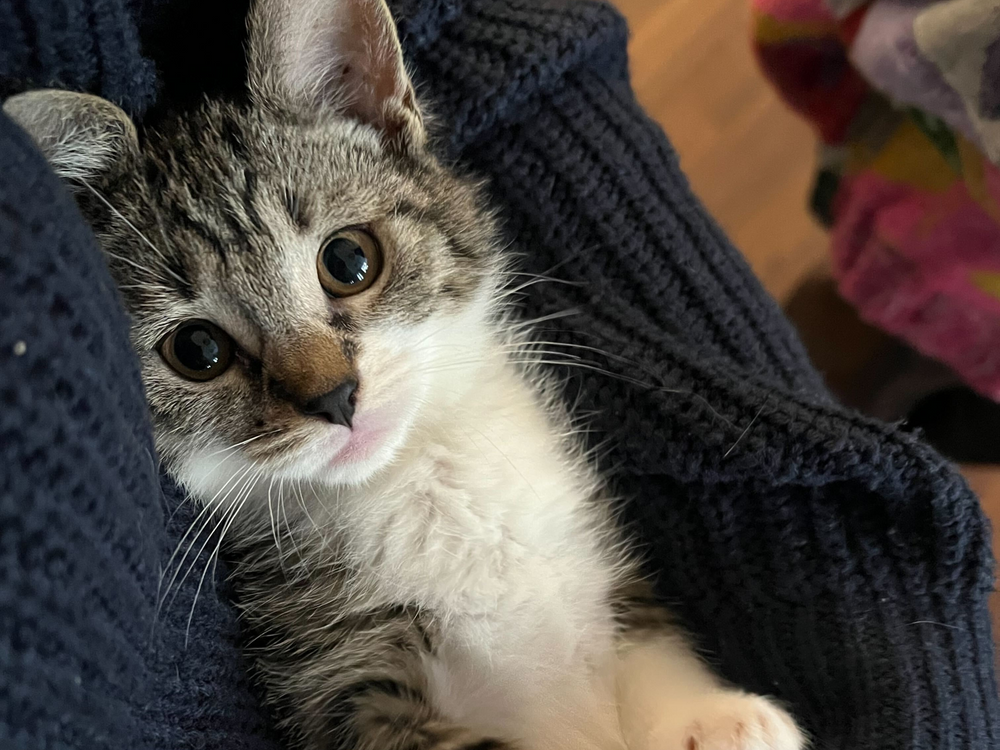
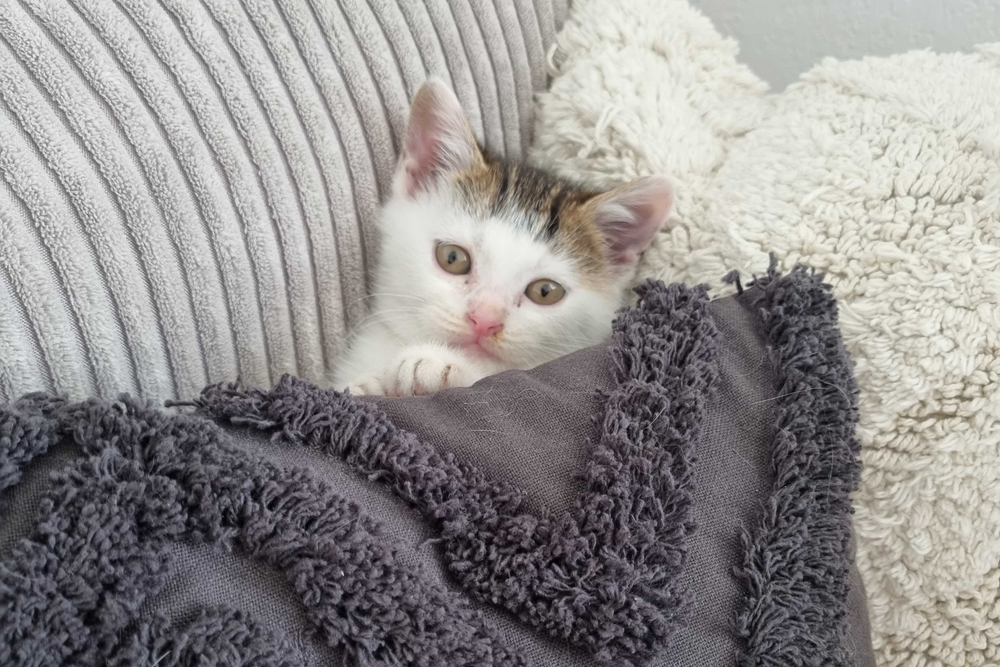
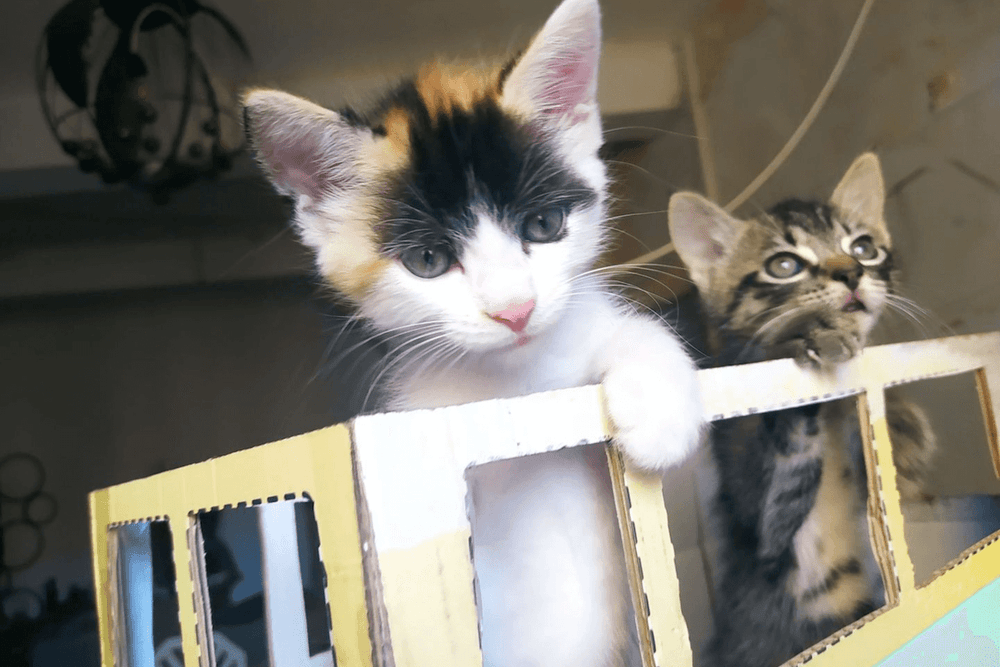
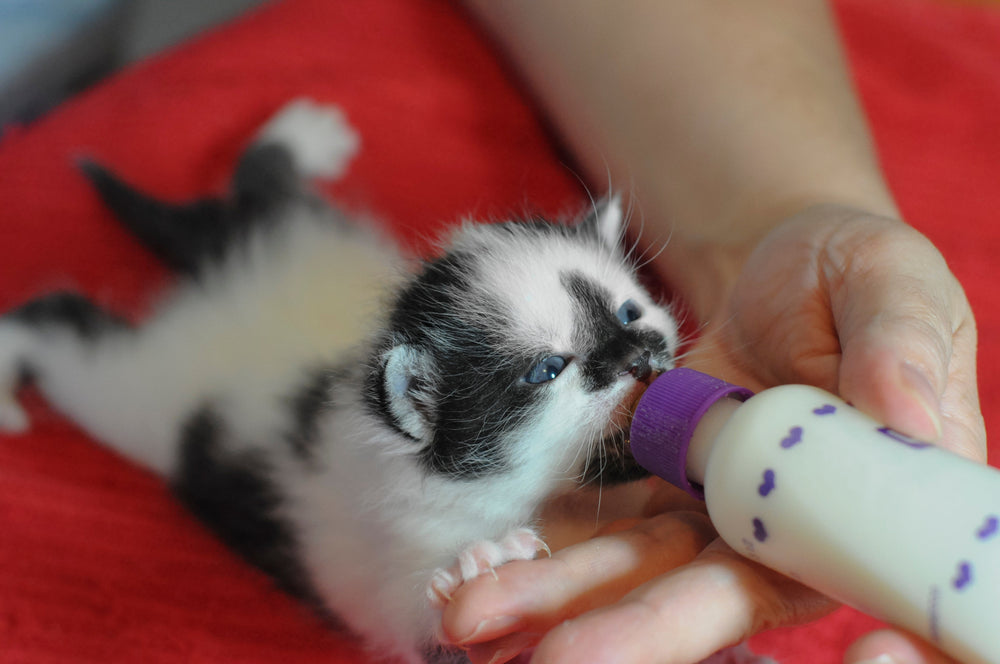
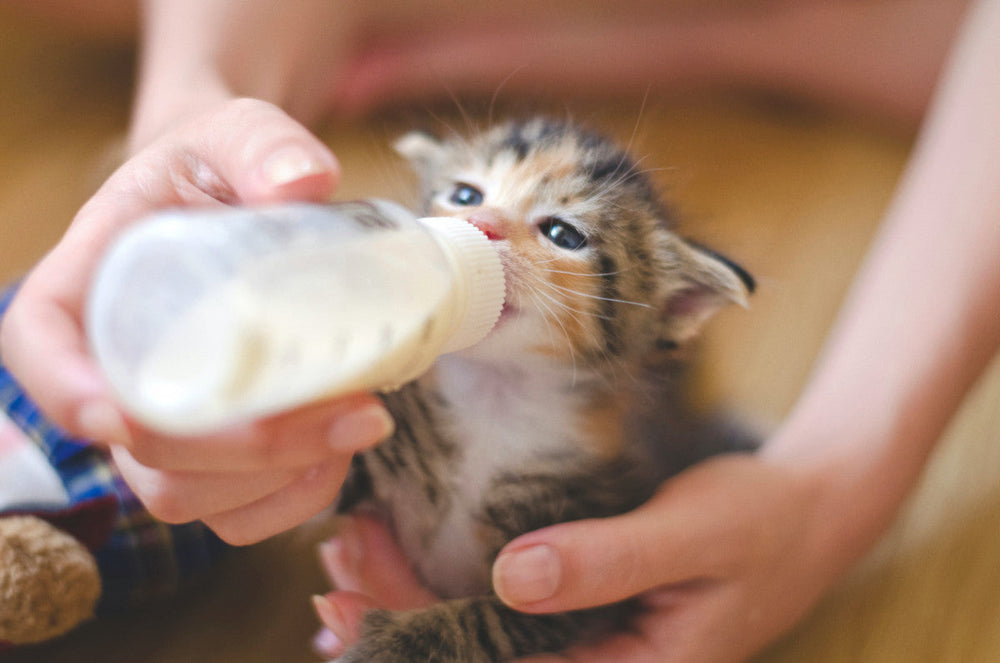
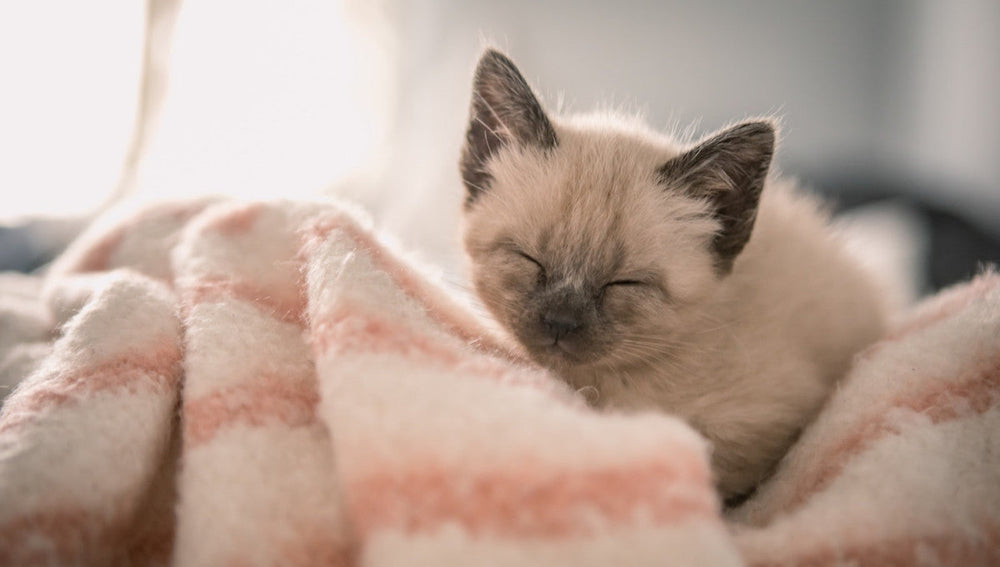



Bonjour,
Merci pour votre commentaire 💛
La gamelle de vos deux chatons doit combler leurs besoins énergétiques quotidiens. Vous pouvez leur donner des croquettes et des pâtées, mais attention à une surconsommation. Pour vos deux petites louloutes, n’hésitez pas à utiliser notre calculateur de ration. Vous saurez exactement la quantité à leur donner chaque jour. 😺 On vous conseille également de répartir leur ration journalière en plusieurs petits repas.
Pour un accompagnement personnalisé, n’hésitez pas à nous contacter par email à hello@ziggyfamily.com. Nous serons ravis de répondre à toutes vos questions sur vos deux petites chattes.
Plein de caresses à elles. 😽
L’équipe Ziggy
Bonjour, nous avons deux chattes à la maison, une de 10 mois et une de bientôt 4 mois. Nous les avons mis au croquettes à volonté et leurs donnons de la pâtés plusieurs fois par semaine. Cela pause t’il problème qu’elle soit à volonté ?
Merci d’avance
Bonjour,
Merci pour votre commentaire 💛
Pour votre petite Bengal, n’hésitez pas à lire notre article sur l’alimentation du Bengal dans lequel nous vous partageons plein de conseils. 😺 https://ziggyfamily.com/blogs/chats/alimentation-chat-bengal
Si vous souhaitez un accompagnement personnalisé, n’hésitez pas non plus à nous écrire à hello@ziggyfamily.com.
À bientôt,
L’équipe Ziggy
bonjour je vais aquerire une femmel. bengal agee de 4 ans que dois-je lui donner a manger merci
Leave a comment